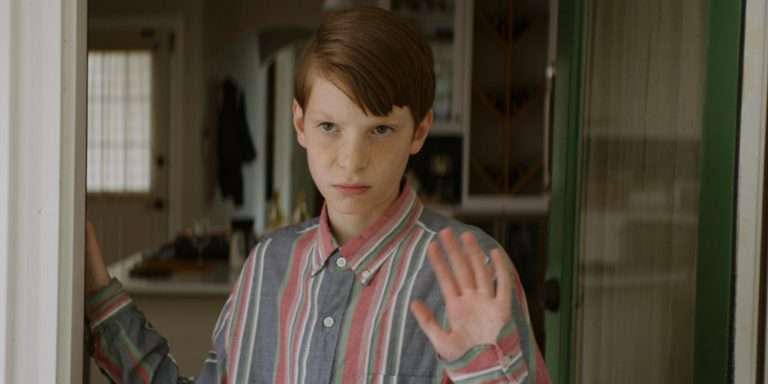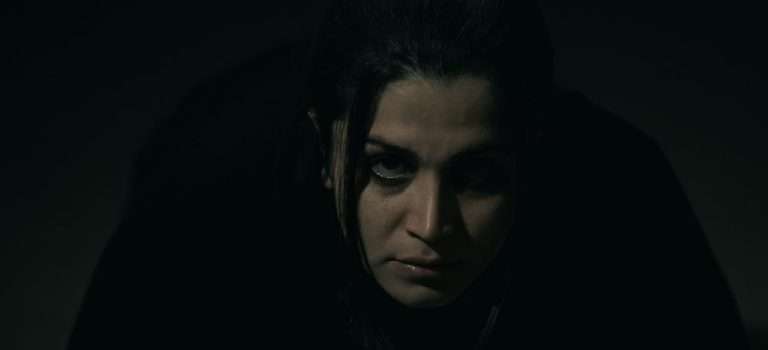John ‘Johnny’ Forbes (Dick Powell) is a middle-aged man living the idyllic American life. He has a beautiful wife, Sue (Jane Wyatt), a young son, and a high-paying job in insurance. He has a daily routine, and everything in it is smooth sailing, except his mind wanders, and he believes life could be something more, a lot more. That more comes in the form of a woman, Mona Stevens (Lizabeth Scott), a stunning blonde damsel in distress, caught in the middle of a troubling relationship with a crook in prison. His possessions are to be taken by the company to pay for his scams, including everything she owns as gifts. At first, Johnny tries to figure out her angle in this through an infatuated Detective, Macdonald (Raymond Burr). Eventually, though, Johnny, in search of adventure, takes the matter of the case into his own hands.
The first meeting is full of tension and sparks; Mona’s frankness in the matter of the crime catches the ethical Johnny unaware. The premise is rife with tension and perfection for a classic film noir; the hero is a sap. The femme is fatal. It helps that the woman in question is portrayed by one of the iconic actresses of this era of cinema, none other than the Smokey voiced Lizabeth Scott. The man will inevitably fall and fall hard, hence the title of the film. Yet something is amiss. In Andre de Toth’s Pitfall, subversion and tension are played like a subtle art. The woman at the center of the plot is nothing like she seems because she isn’t playing any game.
Lizabeth Scott is as transparent as any woman you wouldn’t expect in a film noir, especially one who gets entangled in a dramatic affair. A pivotal scene at the interval of the second act highlights her unique disposition when she reunites with Johnny. Despite the nature of their budding affair, when Mona is made aware of his situation, she is determined not to let his betrayal of his wife’s trust continue. The dialogue work by Toth and writers Karl Kamb and William Powers is astute and even has elements of Metamodernism. Mona tells Johnny how their affair is a play and how she’s not going to turn this into a scheme to save her own skin. It’s the confession of a femme fatale before she even commits any fatal crime.
It’s a profound, almost feminist moment in a style of cinema that has its fair share of criticism from both ends of the debate. Lizabeth Scott and Mona remain the lynchpin of Pitfall. Meanwhile, the men around her can’t seem to make decisions until too late or try to control her fate despite her resistance. Yet that is also where the moral tragedy of Pitfall lies, in the theme of obsession.
Johnny’s own pursuit of Mona and the freshness she provides is an obsession paralleled with Detective Mac and his desire to obtain her love. From the first scene, Burr’s wild eyes firmly establish how he desires this woman. In return, Powell encapsulates Johnny’s mid-life crisis with clinical apathy. It’s easy to see how he falls into the archetype of the idiotic Noir hero that will lead to his own downfall (or should we say Pitfall?).

This becomes a running gag with Johnny. His failure to see the forest for the trees is a dark joke highlighted best by his relationship with his son. His little boy is growing quietly and quickly, and Johnny cannot help but lament his increasing wants. He blames this on the selfish thinking of a newer generation that just can’t be satisfied with the life they live. The irony of his situation is laid on thick despite Johnny being unable to understand it.
Much of the screenplay does the heavy lifting with literary devices highlighting the moral quandary Johnny and Mona are placed in once Mac becomes a looming threat. Mona’s self-sacrificial nature contrasts her possible role as the femme fatale, despite operating as a film noir; it feels more akin to a tragic romantic drama. This is despite the fact that Mac’s actions wheel in Mona’s criminal boyfriend, Bill Smiley (Byron Barr), seething over the betrayal. The theme of obsession and possession inevitably leads the talky drama towards an end, befitting the film noir tag.
Johnny is forced to confront his infidelities when the consequences arrive at his doorstep to his family. In return, Mona, too, has to fight for her own safety and ends up murdering Mac in self-defense. Neither protagonist leaves the story unscathed, yet affirming the characteristic of the genre, only Mona truly pays the price. Johnny has to find himself in a strained marriage that could heal over time as Mona looks to prison, despite the reasoning behind her actions.
In many ways, the screenplay highlights how disparate the penalties are for men and women. It is in the execution, limited by the Hays code, that the film aids its greatest gift: the unique characterization of Mona lifted by the gentle performance of Lizabeth Scott. The screenplay and De Toth cheekily got away with this minuscule bit of censorship, fatefully because the committee members in charge themselves were committing adultery.
The rest of the craft elements that make up the film don’t quite measure up to her allure. Unfortunately, Some of this feels outdated, with two shots of male and female characters highlighting the poorly contrasting lighting schemes applied to the two. In some scenes, the viewer can funnily notice the hard lighting on Powell’s features clash with the soft focus applied to Lizabeth Scott or Jane Wyatt. Much of the editing is mechanical, cutting conversations between shot and reverse shot. The passage of time is expectedly presented through crossfading. The drama is barely enhanced by anything but the performances.
Yet what a genre-defining performance it is! Lizabeth Scott shoulders Pitfall with her magnetic turn with some help from Raymond Burr’s antagonist. In her first scene, she straddles the line between flirty and confrontational; it becomes difficult to tell if she is a femme fatale. Perhaps what her performance does best is question the very archetype, finding within it greater layers and nuance. Despite the meat of such a typical role, few actresses could truly shine with such range due to the outdated moral coding behind the character. Lizabeth Scott stands the test of time as an icon of the film era for her ability to be so much more than the role demands.



![Karnan [2021]: Prime Video Review – A Brilliant Subversion on the Community Saviour Template](https://79468c92.delivery.rocketcdn.me/wp-content/uploads/2021/05/Karnan-1-768x384.jpg)

![The Road Movie [2018]: Anarchy on the Roads of Hell](https://79468c92.delivery.rocketcdn.me/wp-content/uploads/2018/01/ROAD_MOVIE_2018_HOF-768x432.jpg)

